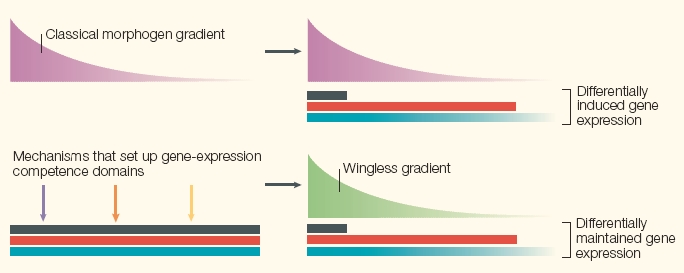Concentration gradients of morphogens regulate transcription of other genes
Keywords
Flag Inappropriate
Delete Content

Concentration gradients of morphogens regulate transcription of other genes
a) A classical morphogen (pink) elicits differential gene expression (represented by the black, red and blue bars) by activating different genes at different concentrations. b) One example of such a morphogen is Wingless (shown in green), which functions by modulating gene expression in a concentration-dependent manner. Genes with broad domains of potential expression are set up by various mechanisms (as indicated by the colored arrows), which include the genetic history of the cell or intercellular signalling. Each of these genes has a different response threshold to Wingless. So, a gradient of Wingless results in the stable differential expression of the different genes and the patterning of the field of cells simply by determining their domains of maintenance. One way in which this can be achieved is by modulating chromatin structure.
This image is linked to the following Scitable pages:
During early embryonic development, cellular signals dictate that we should be built with two sides, a top and bottom, and a front and back. But what genes create these signals, and how do they work?





















Comments
CloseComments
Please Post Your Comment